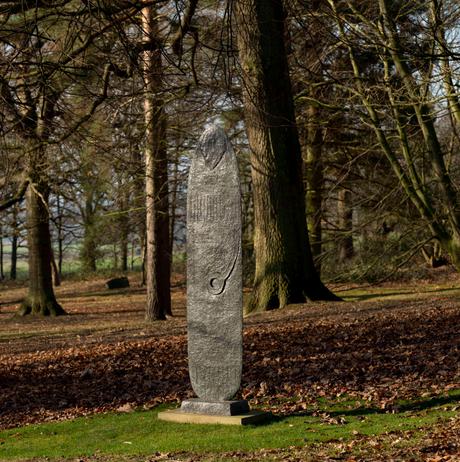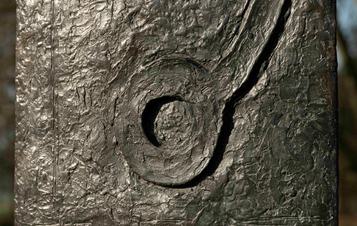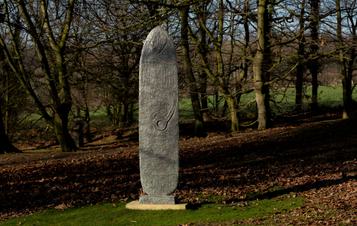
William Turnbull: Ancestral Figure
Art Outdoors /William Turnbull: Ancestral Figure
William Turnbull (1922-2012) was part of a new generation of British sculptors that emerged after the Second World War. These artists, including Elisabeth Frink, Lynn Chadwick and Eduardo Paolozzi, sought to express the horrors of war in their work.
Turnbull’s experiences as a pilot in the RAF during WWII gave him a new, powerful perspective on the world, both physically in the sense of aerial views, and from contact with other cultures.The figure, head, mask and horse appear many times across the artist’s work.
The shape of Ancestral Figure could be a tablet containing written information, or a tombstone marking a grave. The surface is covered with shapes, lines, ridges and grooves. These might be facial features but they also resemble ancient symbols and languages.
Turnbull’s sculptures remind us of the power of simple objects, shapes and lines to express our shared human history and what we hold sacred
I am always amazed how objects that are three thousand, four thousand or more years old can look as if they were done much more recently than things made fifty or sixty years ago. This way they can jump right through time.
- William Turnbull
Ancestral Figure is on loan courtesy of the Estate of William Turnbull.
The display of these sculptures has been made possible by the provision of insurance through the Government Indemnity Scheme. Yorkshire Sculpture Park would like to thank HM Government for providing Government Indemnity and the Department for Culture, Media and Sport and Arts Council England for arranging the indemnity.
You may also like
- Art Outdoors

Elisabeth Frink: First Man
Elisabeth Frink was interested in human and animal forms. She used the male figure to explore the complexities of humanity, exposing both strength and vulnerability, as with First Man. - Art Outdoors

Elisabeth Frink: Standing Man
- Art Outdoors
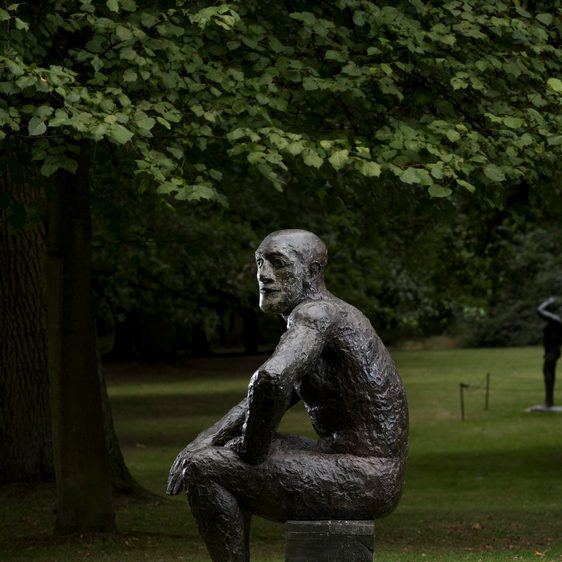
Elisabeth Frink: Seated Man II
Seated Man II relates strongly to Frink’s larger-than-life Riace figures. - Art Outdoors
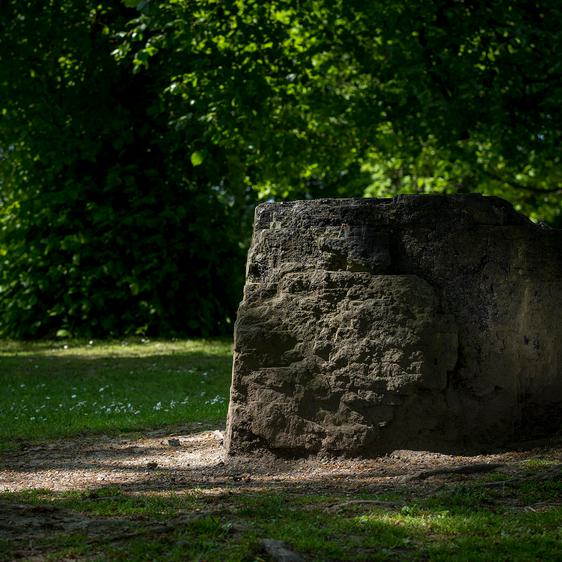
David Nash: Barnsley Lump
Barnsley Lump is a rough-cut block of local coal that connects to the geological and social history of the area. It is gradually disintegrating back into the earth, as Nash anticipated, describing it as a ‘going’ work.
